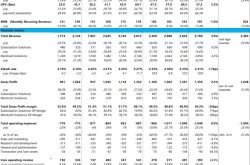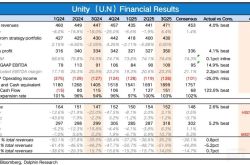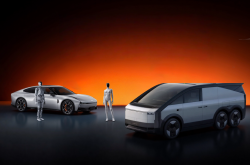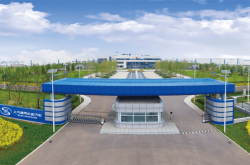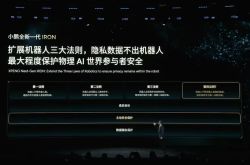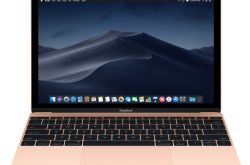Autonomous Boats Navigate from Land to Water: Will ZeroTech's 2,000 Unmanned Crafts Revolutionize Scenic Tours?
![]() 07/15 2025
07/15 2025
![]() 408
408
Introduction
You might have ridden an autonomous taxi on land, but have you ever sailed on an unmanned cruise boat? At Guangzhou's Zhuhai Lake, 20 sleek white cruise boats adorned with "mushroom head" sensors glide gracefully across the water. Without a steering wheel or captain, they adeptly avoid playful swans and suddenly swerving pedal boats, docking precisely at tourists' specified spots.
This isn't a scene from a sci-fi movie but a novel "water autonomous driving" innovation by ZeroTech.
Their "Lingling Whale" series of cruise boats not only secured the first domestic license for autonomous vessels in scenic spots but also plans to deploy 2,000 boats nationwide—a move that's poised to disrupt the scenic cruise boat industry.
Let's delve into this!
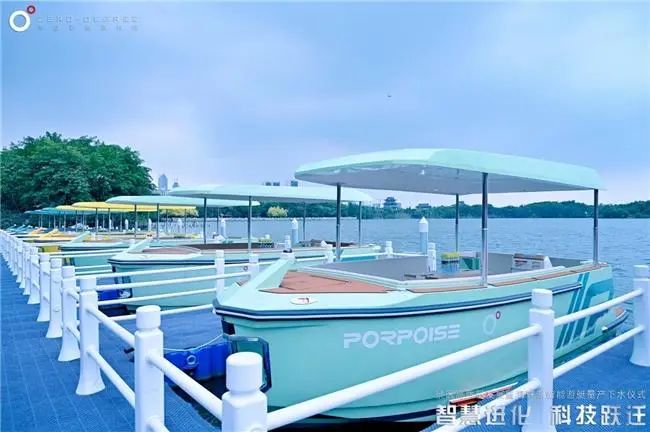
Why Have Scenic Spots Become the "Experimental Field" for Autonomous Driving on Water?
If you think autonomous driving on water is as challenging as on land, you'd be wrong. Scenic spot waters are akin to a "gentle playground" tailored for L4 autonomous driving.
Firstly, the environment is straightforward. The cruise boat channels at Zhuhai Lake are fixed, akin to "lane lines" for ships, without unexpected "water delivery guys" or "motorboats" running red lights.
This structured setting significantly reduces the complex judgments required by autonomous driving sensors and algorithms. It's like driving an autonomous vehicle in a gated community, ten times easier than navigating city streets.
Secondly, the rules are clear. Tourists on boats aren't as "capricious" as drivers on the road. Pedal boats move slower than snails, and swan families cross the water (or "road") leisurely.
ZeroTech's algorithm only needs to adhere to two rules: "slow down when seeing obstacles and maintain a safe distance," which handles 90% of situations. Once, an egret landed on the bow of a cruise boat at Baiyun Lake, and the boat immediately stopped to "wait for the bird to fly." This reaction was far more effective than the scenic spot safety officer's whistle.
Most importantly, there's a "strong, rigid demand." Traditional scenic spot cruise boats are plagued with issues: long queues during peak seasons, novice captains driving erratically, some playing on their phones and nearly hitting shore willows, while others drive too fast due to fewer tourists, turning "leisurely sightseeing" into a "water roller coaster." ZeroTech's autonomous cruise boats solve these problems seamlessly. They never get tired, distracted, or drive based on mood. Feedback from Zhuhai Lake tourists shows that 63% feel "unmanned boats are more stable than manned ones," and 58% say they're "willing to pay an extra 10 yuan for this quiet experience." Scenic spot operators are equally pleased: previously, 20 boats required 20 captains, but now only 2 safety officers need to monitor the background, reducing labor costs by 90%.
Besides Not Needing a Captain, What Other Black Technologies Does This Boat Have?
Don't assume autonomous cruise boats are as simple as "removing the steering wheel." ZeroTech's "Lingling Whale" boasts numerous innovative designs that would surprise seasoned captains.
1. "Dual-mode switching," as convenient as a mobile phone's "airplane mode." While autonomous driving is typically used on fixed routes, when tourists want to temporarily visit a small island for photos, the safety officer taps a tablet twice to switch to manual driving. At Guangzhou Children's Park, a group of children clamored to see the lotus in the lake center. The safety officer remotely controlled the cruise boat to turn the corner, meeting the demand without disrupting the overall schedule—a flexibility far superior to fixed-route sightseeing buses.
2. "New energy + intelligent scheduling," blending "green" and "efficient." The hull uses lithium iron phosphate batteries, running silently without the traditional fuel boats' "putt-putt" black smoke. The 20 boats at Zhuhai Lake reduce carbon dioxide emissions by 70 tons annually, equivalent to planting 3,800 trees. Even more impressive is the intelligent scheduling system, adjusting launch frequencies based on real-time tourist numbers. On weekends, it's one boat every 10 minutes; on weekdays, one every half-hour. This ensures tourists don't wait too long, and boats don't run empty, wasting electricity.
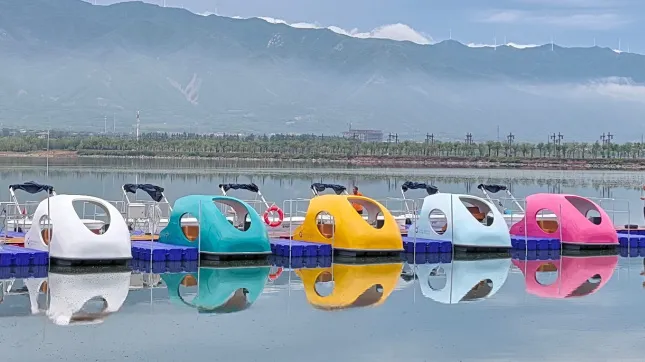
3. The most thoughtful feature is the "modular cabin," akin to a "Transformer on water."
It can be a passenger sightseeing cruise boat in the morning, a water restaurant at noon with dining tables, and an education boat in the afternoon with science popularization display boards.
At the South China Botanical Garden's lake, ZeroTech even combined "unmanned boats + underwater cameras," allowing tourists to view fish schools through screens—an experience unimaginable with traditional cruise boats.
From Trial to Sprint: Will 2,000 Boats Occupy Scenic Spots Nationwide?
ZeroTech's ambitions extend beyond Guangzhou. They invested 800 boats in 2024 and plan to invest 2,000 in 2025, "contracting" all famous scenic spot lakes in China.
1. The Zhuhai Lake pilot project yielded impressive results. Since the 20 "Lingling Whale" boats commenced operations, the tourist experience score for Zhuhai Lake's cruise boats surged from 3.2 (out of 5) to 4.7, with complaints dropping by 95%. Even the previously notorious "two-hour queue during peak seasons" was shortened to 20 minutes through the appointment system and increased frequencies. The scenic spot manager did the math: although a single boat's procurement cost is 30% higher than a traditional boat, considering labor, fuel, and maintenance costs, the investment will be recovered in three years.
2. The "upgraded version" at Baiyun Lake is even more advanced. The cruise boats here are equipped with a 5G central control system interacting with smart lampposts and cameras onshore. For instance, if a camera detects tourists swimming in a dangerous water area, it immediately notifies nearby cruise boats to "detour and broadcast a reminder." If the lamppost detects rain, the system docks the boats in advance—this "water-land coordination" maximizes safety.
3. Overseas markets are also being quietly explored. Scenic spots in Southeast Asia, with numerous lakes and tourists but a lack of reliable captains, have been frequent visitors. ZeroTech has already tested in Singapore's Marina Bay, with hulls specially treated for corrosion resistance to withstand seawater. A Southeast Asian scenic spot owner joked, "If I had this boat earlier, I wouldn't have worried daily about the captain drinking too much and crashing into coral reefs."
Has Autonomous Driving on Water Never Encountered Trouble?
Of course, it has.
As the "first crab-eater" in southern China (with Oukai Zhibo in the north), ZeroTech has encountered numerous pitfalls.
1. The biggest hurdle was the "blank rule." There's the "Measures for the Road Testing and Demonstration Application Management of Intelligent and Connected Vehicles" for land autonomous driving, but no existing rules for water. When testing began at Zhuhai Lake, maritime department personnel visited several times: "This boat has no captain; who's responsible if something goes wrong?" After six months of mutual adjustment, they formulated the "Guidelines for the Safety Management of Autonomous Driving Vessels in Scenic Spots," stipulating 18 detailed rules, including the necessity of background monitoring, emergency stop buttons for each boat, and automatic return during inclement weather—perhaps the first domestic management regulation for autonomous vessels in scenic spots?
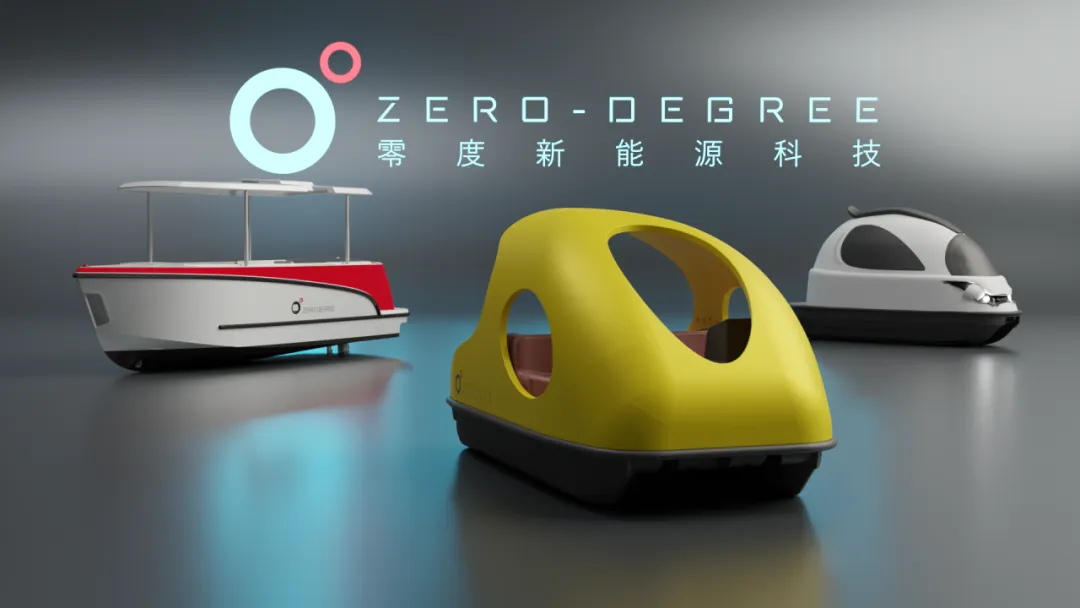
2. There were also many "technical interludes." During a heavy rainstorm, the boat's lidar got wet, mistaking water ripples for obstacles and abruptly stopping in the lake center.
Tourists weren't panicked and even took videos of the "unmanned boat strike." The background safety officer remotely switched to visual navigation mode, and the boat continued moving forward.
Now, the new generation of unmanned boats has windshield wipers outside the lidar, preventing such low-level errors.
3. There's also the "curiosity" of tourists. Some deliberately test the boat's smartness, placing a plastic bottle on the channel to see if it avoids it. Once, an old man stretched his fishing rod in front of the boat. Instead of hitting the rod, the boat triggered the "collision warning" and immediately broadcast, "Obstacle ahead, please remove it, otherwise the boat will pause." The old man was amused by this "electronic butler"-like reminder and obediently retracted his rod.
Conclusion: When Boats Also Learn to Drive Themselves, What Will We Lose?
Some fear that with the proliferation of autonomous boats, old scenic spot captains will lose their jobs.
But Zhuhai Lake's situation shows that captains either became background safety officers (with a 30% salary increase) or transitioned to tourist services (like explaining scenic spots), transforming from "physical labor" to "technical labor."
More importantly, this change has revitalized scenic spots' "water economy." Previously, cruise boats were just "viewing tools," but now, through modular design, they can become water cafes, science popularization classrooms, or even mobile viewing platforms—the longer tourists stay on the boat, the more they consume. Some scenic spots report that after introducing autonomous boats, surrounding store income increased by 40%.
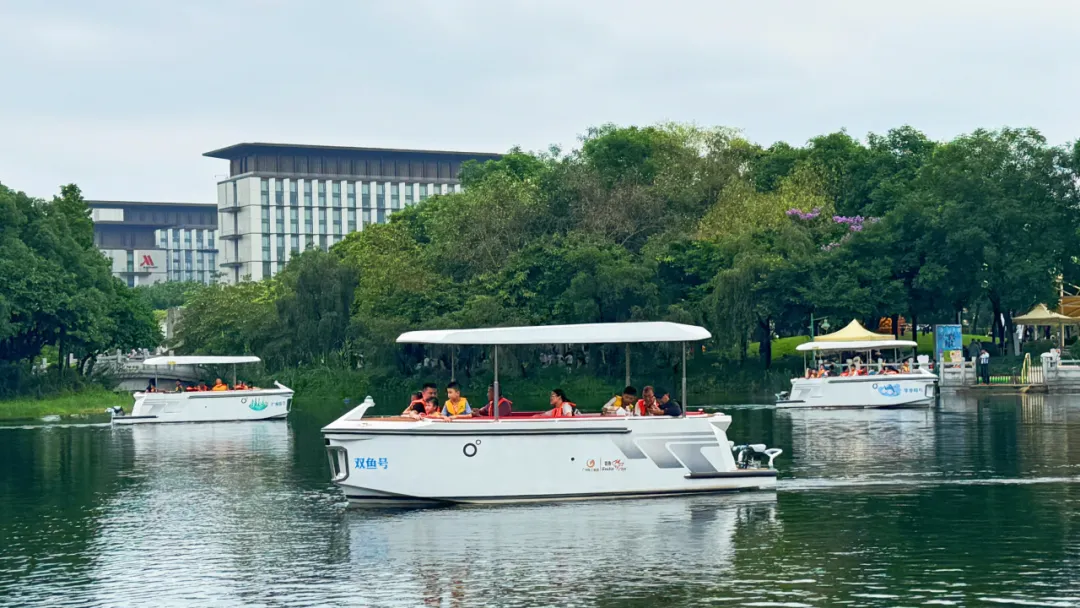
Perhaps someday in the future, we'll accept autonomous boats as we now accept mobile payments. When sipping Longjing tea on the "Lingling Whale" in West Lake and watching it avoid painted pleasure boats and dock precisely, you might suddenly realize: technology has not only changed how we travel but also how we interact with nature—from "people controlling boats to view scenery" to "people and boats integrating into the scenery together." Cheng Yichun, ZeroTech's CEO, said, "Autonomous driving on land is a 'disruption,' while autonomous driving on water is a 'supplement.'" This is true. After all, not all places need unmanned boats, but in specific scenarios like scenic spots, ports, and canals, they can indeed liberate people from repetitive labor to do more valuable things. In short, I also believe that the next time you visit a scenic spot and see an unmanned boat approaching, don't be surprised—it might be ZeroTech's "Lingling Whale," steering you towards a future where "boats drive themselves."
What do you think, dear reader?


